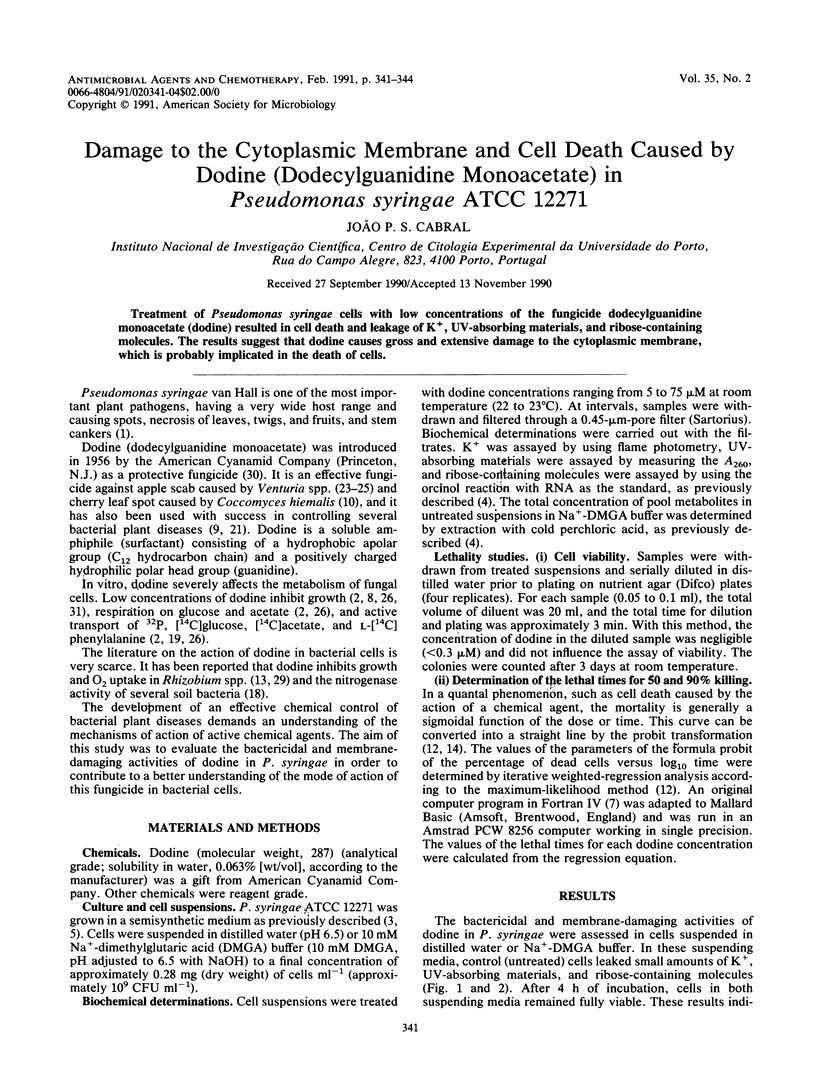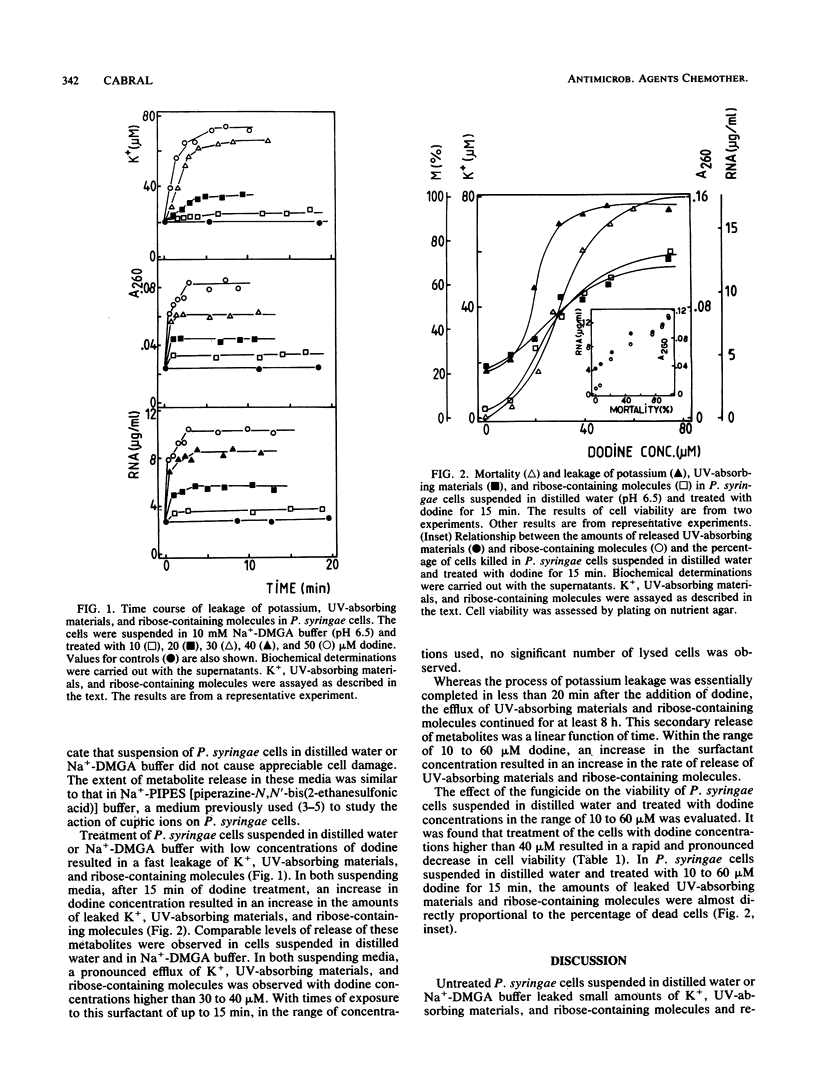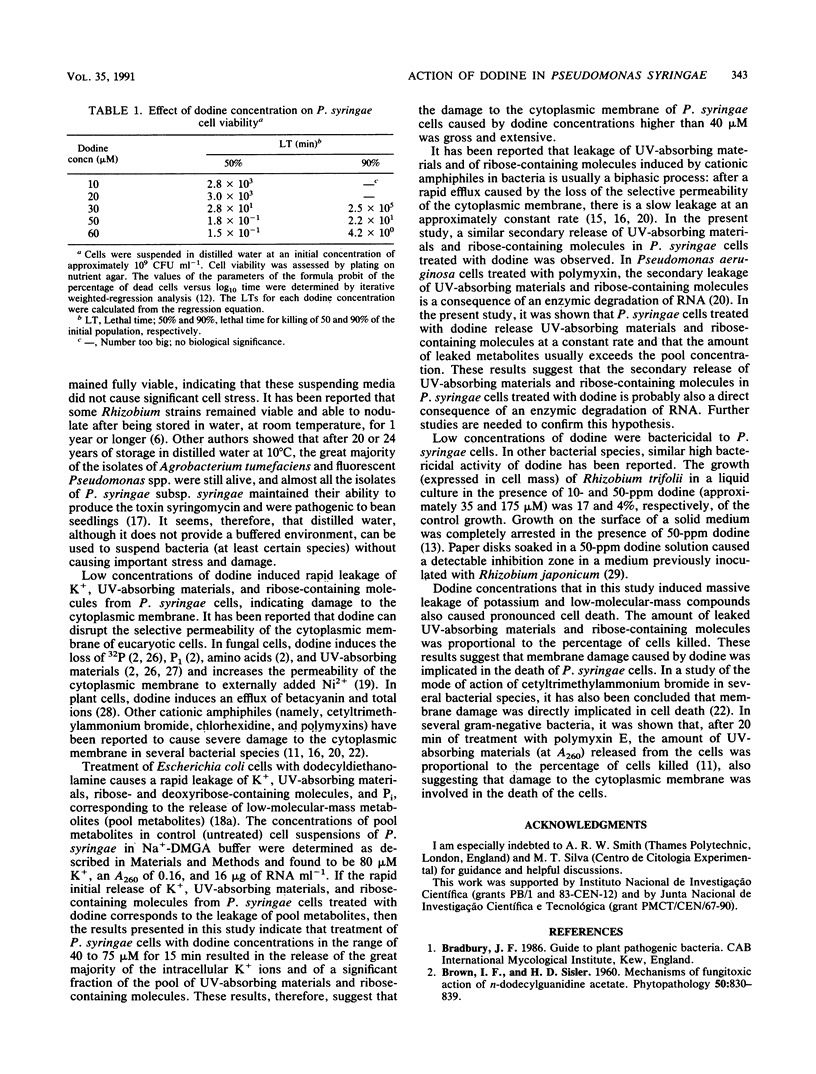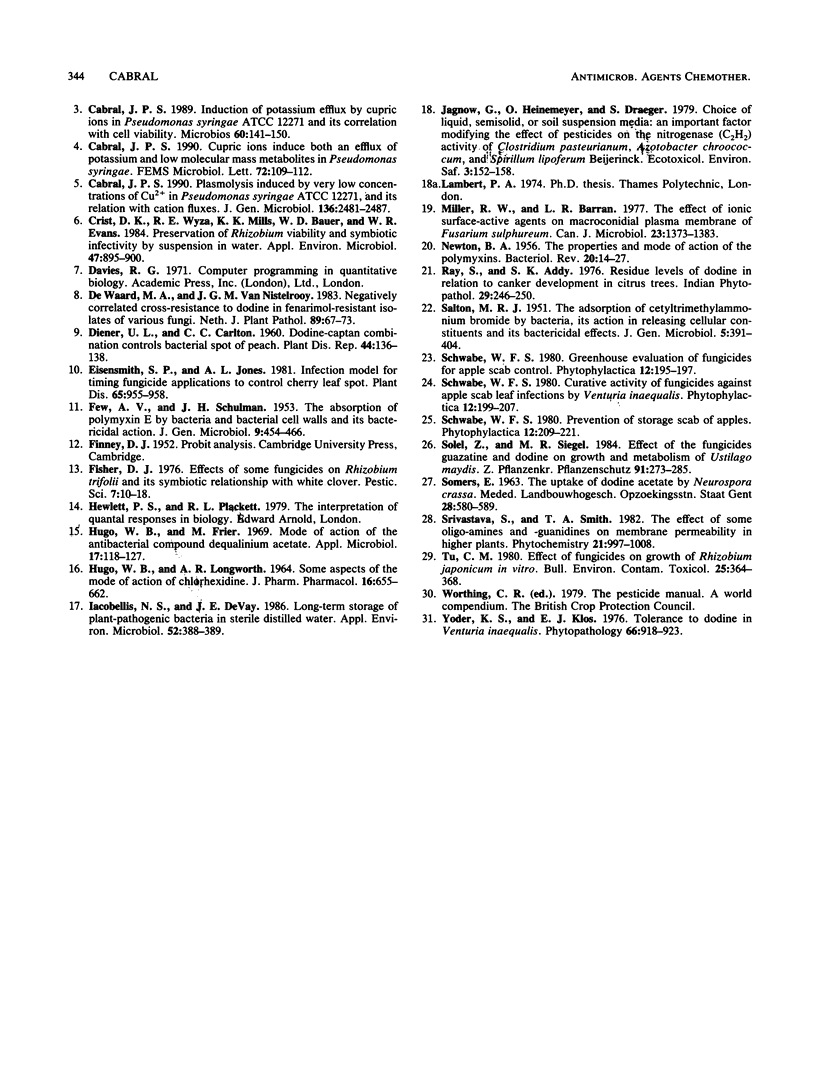Abstract
Treatment of Pseudomonas syringae cells with low concentrations of the fungicide dodecylguanidine monoacetate (dodine) resulted in cell death and leakage of K+, UV-absorbing materials, and ribose-containing molecules. The results suggest that dodine causes gross and extensive damage to the cytoplasmic membrane, which is probably implicated in the death of cells.
Full text
PDF



Selected References
These references are in PubMed. This may not be the complete list of references from this article.
- Cabral J. P. Induction of potassium efflux by cupric ions in Pseudomonas syringae ATCC 12271 and its correlation with cell viability. Microbios. 1989;60(244-245):141–150. [PubMed] [Google Scholar]
- Crist D. K., Wyza R. E., Mills K. K., Bauer W. D., Evans W. R. Preservation of Rhizobium viability and symbiotic infectivity by suspension in water. Appl Environ Microbiol. 1984 May;47(5):895–900. doi: 10.1128/aem.47.5.895-900.1984. [DOI] [PMC free article] [PubMed] [Google Scholar]
- FEW A. V., SCHULMAN J. H. The absorption of polymyxin E by bacteria and bacterial cell walls and its bactericidal action. J Gen Microbiol. 1953 Dec;9(3):454–466. doi: 10.1099/00221287-9-3-454. [DOI] [PubMed] [Google Scholar]
- HUGO W. B., LONGWORTH A. R. SOME ASPECTS OF THE MODE OF ACTION OF CHLORHEXIDINE. J Pharm Pharmacol. 1964 Oct;16:655–662. doi: 10.1111/j.2042-7158.1964.tb07384.x. [DOI] [PubMed] [Google Scholar]
- Hugo W. B., Frier M. Mode of action of the antibacterial compound dequalinium acetate. Appl Microbiol. 1969 Jan;17(1):118–127. doi: 10.1128/am.17.1.118-127.1969. [DOI] [PMC free article] [PubMed] [Google Scholar]
- Iacobellis N. S., Devay J. E. Long-term storage of plant-pathogenic bacteria in sterile distilled water. Appl Environ Microbiol. 1986 Aug;52(2):388–389. doi: 10.1128/aem.52.2.388-389.1986. [DOI] [PMC free article] [PubMed] [Google Scholar]
- Jagnow G., Heinemeyer O., Draeger S. Choice of liquid, semisolid, or soil suspension media: an important factor modifying the effect of pesticides on the nitrogenase (C2H2) activity of Clostridium pasteurianum, Azotobacter chroococcum, and Spirillum lipoferum Beijerinck. Ecotoxicol Environ Saf. 1979 Jun;3(2):152–158. doi: 10.1016/0147-6513(79)90008-3. [DOI] [PubMed] [Google Scholar]
- Miller R. W., Barran L. R. The effect of ionic surface-active agents on macroconidial plasma membrane of Fusarium sulphureum. Can J Microbiol. 1977 Oct;23(10):1373–1383. doi: 10.1139/m77-206. [DOI] [PubMed] [Google Scholar]
- NEWTON B. A. The properties and mode of action of the polymyxins. Bacteriol Rev. 1956 Mar;20(1):14–27. doi: 10.1128/br.20.1.14-27.1956. [DOI] [PMC free article] [PubMed] [Google Scholar]
- SALTON M. R. J. The adsorption of cetyltrimethylammonium bromide by bacteria, its action in releasing cellular constituents and its bactericidal effects. J Gen Microbiol. 1951 May;5(2):391–404. doi: 10.1099/00221287-5-2-391. [DOI] [PubMed] [Google Scholar]
- Tu C. M. Effect of fungicides on growth of Rhizobium japonicum in vitro. Bull Environ Contam Toxicol. 1980 Sep;25(3):364–368. doi: 10.1007/BF01985539. [DOI] [PubMed] [Google Scholar]


